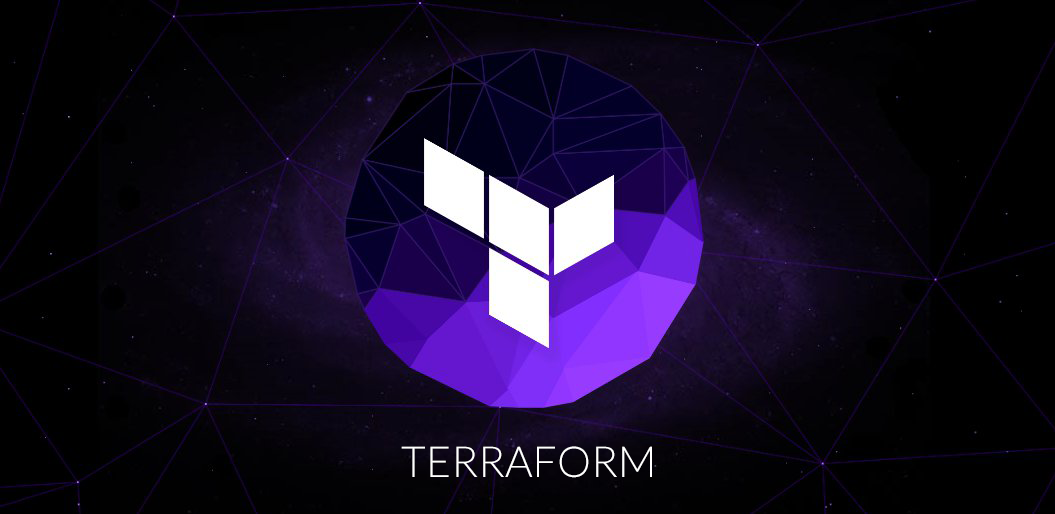Deep Dive into Terraform - P4 (Terraform Variables)
 Yash Varma
Yash Varma
Before moving ahead and start discussing about the Variables in Terraform and their examples. Let's take the quick overview on the various previous aspects of Infrastructure as Code, Terraform, and Terraform State.
What is Infrastructure as Code (IaC) ?
Terraform is an open-source infrastructure as code tool that supports multiple cloud providers and on-premises infrastructure the Infrastructure as a Code (IaC) has brought up a new approach for managing and provisioning IT infrastructure with the help of code the Infrastructure as a Code (IaC) brings automation, consistency, and scalability to infrastructure deployment and in the management of IT infrastructure. Basically, the Infrastructure as Code (IaC) is a sort of a method used in the field of cloud computing and the software development that enables the management and provision of computing infrastructure by writing and using a machine-readable script files, rather than performing the manual processes. The Infrastructure as a Code (IaC) involves the defining of various infrastructure elements such as virtual machines, networks, storage, and configurations by using code, which can be written in the declarative programming language. This code can be stored in version control systems (VCS) like Git, which will allow the teams to do collaboration, track various changes, and roll back to previous versions if necessary.
What is Terraform?
Terraform is an open-source infrastructure as a code tool from HashiCorp. It allows users to define both on-premises and cloud resources in human-readable configuration files that can be easily versioned, reused, and shared. It transforms the way for the companies or the users to manage and deploy their infrastructure over the cloud environments. With the rise in the popularity of Terraform, it has become famous for it's efficiency, scalability, and flexibility in the world cloud computing or the cloud infrastructure environments. The terraform is not capable of managing low-level components like webservers, storage services, and networking resources but it is also capable in managing the high-level resources such as DNS, PaaS, and SaaS components. The terraform is a declarative tool which is used for simplifying the user's experience by allowing the users to specify the expected state of the resources without the need to specify the exact steps to achieve the desired state of infrastructure resources.
What is Terraform State?
The state management in Terraform is a strategic way for maintaining infrastructure as code (IaC) effectively, efficiently and safely. The Terraform state management is a very crucial component because it stores the information about the various resources managed by the Terraform, including their configurations and dependencies. The terraform state management in crucial for its role in tracking the current state of various infrastructure deployments. The terraform uses this terraform state file for determining that what changes are needed to make to reach the desired state defined in the configuration files. The terraform state management enables the enhanced collaboration between the team members working on the same infrastructure. Storing the terraform state file in the remote backend locations. For e.g., Terraform Cloud, AWS S3, or Azure Storage the multiple team members can collaborate together and effectively on the infrastructural changes.
What are Terraform Variables?
The Terraform Variables are one of the fundamental elements in the Infrastructure as Code (IaC) workflows, providing flexibility, reusability, and dynamic nature to the infrastructure configurations. The terraform variables are the kind of tools for managing infrastructure configurations in a dynamically and scalable manner, by understanding their types, patterns, and other best practices, the developers or the DevOps Engineers can use the full potential of variables to enhance their infrastructure as code (IaC) workflows, it improves the code maintainability, and can achieve great help in the management of infrastructure.
Basically, the variables in Terraform serve as placeholders for the dynamic values, by allowing for reusability and adaptability of the configurations, from defining resource attributes, configuring environments, or managing sensitive information, in every aspect the terraform variables plays a crucial role.
Terraform variables are very good in organizing the infrastructural configurations, managing environmental based settings, and securing the sensitive information. The terraform variables enables the developers or the DevOps Engineers to configure their codebases effectively and efficiently, by making them easily adoptable to the various deployment scenarios and various environments. By utilizing the best practices such as consistent name usage, documentation, and secure handling of the sensitive data, developers or the DevOps Engineers can ensure the ease and maintainability of their Terraform configurations.
Types of Variables in Terraform
There are total three types of variables in Terraform named as:
Input Variables
Output Variables
Local Variables
Input Variables
The Input variables in Terraform are the type of variables that can be used for values that can be passed into Terraform configurations during runtime or the execution. The Input Variables allow users to dynamically define the parameters for their infrastructure configurations, by making them reusable, flexible, and customizable as per the needs. The input variables enables the users or the developers to remove away the hard-coded values, which simply leads to the enhancement to the better Terraform code management and the organization of Terraform code at the level best. With the help of input variables, the developers or the DevOps Engineers can define defaults, constraints, and the validation rules to ensure the high consistency and reliability across the various deployments. These terraform variables play a important role in safeguarding the configuration details, by making the code more maintainable and adaptable.
For Example:- If we are provisioning a virtual machine (VM) in a cloud provider using Terraform. Instead of hard-coding specific attributes like the VM size, region, and image ID directly into the configurations, we can use the input variables to make our configurations more adaptable. So, for performing this activity of defining the Input Variables:
Firstly we will create a
variables.tffile to define our input variables:variable "vm_size" { description = "Size of the virtual machine (For e.g., small, medium, large)" type = string } variable "region" { description = "Region where you want the VM to be deployed" type = string } variable "image_id" { description = "ID of the image for the VM" type = string }Secondly, now using the above defined input variables in the Resource Configuration for VM:
resource "aws_instance" "example_vm" { ami = var.image_id instance_type = var.vm_size availability_zone = var.region tags = { Name = "VM name" } }Thirdly, now we will provide the input variables value's in
terraform.tfvarsfile:vm_size = "t2.medium" region = "ap-south-1" image_id = "ami-7887459483ewi8"
Output Variables:
The Output Variables, provide a mechanism for exporting or transferring the information from Terraform configurations. The output variables allow the users to retrieve the various resource attributes and make them available for use by the external systems. Basically, the output variables provide a great way to extract the information from your deployed resources, by making it accessible for other systems, scripts, or even by other Terraform configurations. The Output variables are useful for fetching the information such as IP addresses, domain names, or other information regarding the provisioned resources using Terraform.
For Example:- We already have the terraform configurations of an AWS EC2 virtual machine in AWS cloud provider and we want to fetch the public IP address of that instance once it is deployed on AWS. So, for this activity follow the below steps for defining the output variables to fetch the Public IP address of the EC2 instance:
First, create the
main.tffile for writing the AWS EC2 instance configuration:provider "aws" { region = "ap-south-1" } resource "aws_instance" "example" { ami = "ami-7887459483ewi8" instance_type = "t2.medium" } output "instance_public_ip" { value = aws_instance.example.public_ip }Now, after running the
terraform applycommand and after the successfull provisioning of the EC2 instance, Terraform will throw the output of the public IP address of the EC2 instance:Outputs: instance_public_ip = "31.14.168.300"
Local Variables:
The Local variables are the variables that are used to store the intermediate values within Terraform configurations, by enhancing the organization of code and code readability. The Local variables are particularly useful for storing computed values, transforming data structures, or encapsulating conditional logic within Terraform modules. Basically, the Local variables in Terraform allow us to define values within a module that are not directly associated with specific resources and the outputs. By using local variables, we encapsulate the logic for calculating the total disk storage within the module, making the configuration more readable and maintainable
For Example:- If we have a Terraform module for provisioning a virtual machine (VM) in a cloud provider. And, you need to calculate the total amount of storage required for the virtual machine's disk based on certain parameters like the disk size and the number of disks.
variable "disk_size_gb" {
description = "Size of each disk in GB"
type = number
}
variable "num_disks" {
description = "Number of disks attached to the VM"
type = number
}
# Now, Calculating the total disk storage from here
locals {
total_disk_storage_gb = var.disk_size_gb * var.num_disks
}
resource "example_vm" "my_vm" {
# Other configuration settings for VM provisioning
disk_size_gb = var.disk_size_gb
num_disks = var.num_disks
total_storage_gb = local.total_disk_storage_gb
}
In this, we define the two input variables
disk_size_gbandnum_disksto specify the size of each disk and the number of disks.Using a
localsblock, in which we calculate thetotal_disk_storage_gbby multiplying thedisk_size_gbwith thenum_disks.The calculated
total_disk_storage_gbis then used in the resource blockexample_vmto get the total storage in last linetotal_storage_gb = local.total_disk_storage_gbfor the VM we created.
<-- In this part of Terraform Series we discussed deeply about the Terraform Variables and about the types of Variables -->
<-- Now, in the next part we will discuss about the use of conditional logics with the if-else cases in the Terraform. -->
Subscribe to my newsletter
Read articles from Yash Varma directly inside your inbox. Subscribe to the newsletter, and don't miss out.
Written by

Yash Varma
Yash Varma
As a final year undergraduate with a passion for Cloud DevOps Engineering, I bring a strong foundation in cloud computing and automation to the table. I have a solid understanding of cloud platforms such as AWS or Google Cloud and have honed my skills in infrastructure as code (IaC) using tools like Terraform and CloudFormation. I am eager to apply my knowledge of CI/CD pipelines, containerization, and version control systems to contribute to efficient and automated software development processes. I am a quick learner, highly motivated, and excited to embark on a career in Cloud & DevOps, where I can leverage my technical expertise to drive innovation and streamline operations. In addition to my proficiency in cloud technologies, I bring a wealth of experience in crafting efficient CI/CD pipelines, implementing containerization strategies, and managing version control systems. My eagerness to learn, coupled with my inherent motivation, fuels my drive to continually enhance processes and drive innovation in software development. I am poised to make a significant impact in Cloud, DevOps and DevSecOps leveraging my technical prowess to streamline operations and catalyze organizational growth. Well i am a part-time competitive Coder too, I have a solid understanding of Data Structure and Algorithms as well as of Object Oriented Programming. I usually code in C++ and have the familiarity with Java and Python as well as i also have the intermediate knowledge of Rust Programming language too. Some of my coding achievements are 5🌟 @HackerRank || 4🌟 @CodeChef(Max.Rating->1845) || Knight🔰 @LeetCode(Max.Rating->1858). Along with all these stuffs i have the understanding of Cloud Platforms like Amazon Web Services (AWS) and Google Cloud Platform (GCP). I was also a Google Cloud's Arcade Facilitator in 2k23 where i had mentored 150+ student's and professional's in gaining knowledge about the Google Cloud Platform (GCP). Moreover I had also won some of the Google Cloud's events like Google CRFP'22 || Google CCP'23.